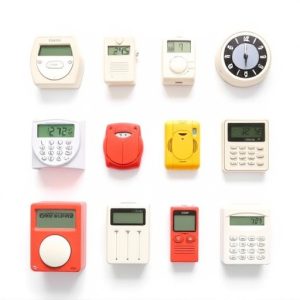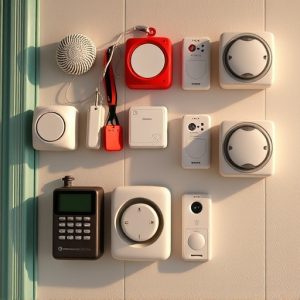Wearable Personal Alarms for Seniors: Safety Features and Monitoring Benefits
Wearable personal alarms for seniors offer enhanced safety, enabling quick alerts to emergency servi…….
Wearable personal alarms for seniors offer enhanced safety, enabling quick alerts to emergency services or caregivers via one-button activation. Features like GPS tracking, automatic fall detection, two-way communication, and customizable alerts create a supportive network. These devices foster independence while swiftly facilitating aid during emergencies, providing peace of mind for seniors and their loved ones. Implementing such an alarm involves choosing the right features, setting up a 24/7 monitoring service, regularly testing it, and keeping emergency contact info updated.
In today’s world, ensuring the safety of our aging population is a top priority. Wearable personal alarms for seniors offer a revolutionary solution, providing peace of mind and enhanced independence. This article delves into the transformative power of body-worn panic alarms and monitoring systems designed specifically for the elderly. We explore the numerous benefits, key features, and practical implementation steps to help seniors and their loved ones stay safe and secure. Discover how these innovative devices are changing the landscape of senior care.
- Understanding Wearable Personal Alarms for Seniors: Benefits and Features
- How Monitoring Systems Enhance Safety for Elderly Individuals
- Implementing and Using Body-Worn Panic Alarms: A Step-by-Step Guide
Understanding Wearable Personal Alarms for Seniors: Benefits and Features
Wearable personal alarms for seniors offer a range of benefits tailored to their unique needs, providing peace of mind and enhanced safety. These innovative devices are designed to be discreetly worn on the body, allowing easy access in case of emergencies. One of the key advantages is their ability to quickly alert emergency services or caregivers when an elderly individual experiences a fall, medical distress, or encounters a dangerous situation.
The features of these alarms are diverse and user-friendly. They often incorporate simple one-button activation, ensuring seniors can easily trigger the alarm in need. Some models even include GPS tracking for accurate location identification, automatic fall detection sensors, and two-way communication functions to establish direct contact with caregivers or loved ones. Additionally, they can be configured to send alerts to multiple contacts, fostering a supportive network around the wearer.
How Monitoring Systems Enhance Safety for Elderly Individuals
Monitoring systems that include body-worn panic alarms have revolutionized safety measures for elderly individuals, offering them and their loved ones peace of mind. These innovative devices are designed to enhance independence while ensuring prompt assistance in case of emergencies. When an elderly person wears a wearable personal alarm for seniors, such as a small and discreet device attached to their wrist or neck, it allows them to call for help instantly with just the press of a button. This is especially beneficial in situations where they might fall or experience a medical emergency without immediate assistance nearby.
With real-time monitoring, caregiving centers or family members can receive alerts as soon as the alarm is activated, enabling quick response times. Advanced monitoring systems often incorporate GPS tracking, allowing precise location identification, which is crucial for elderly folks who may wander or become disoriented. This technology not only facilitates faster emergency responses but also provides valuable data on the senior’s whereabouts and well-being, contributing to a safer and more secure environment for their daily lives.
Implementing and Using Body-Worn Panic Alarms: A Step-by-Step Guide
Implementing and using body-worn panic alarms is a straightforward process designed to provide peace of mind, especially for seniors living alone or those with mobility issues. Here’s a step-by-step guide:
1. Choose the Right Alarm: Select a wearable personal alarm that best suits your needs. Look for features like easy-to-use buttons, long battery life, water resistance, and compatibility with monitoring services. Some models offer additional benefits like fall detection or automatic alert dispatch, ideal for seniors.
2. Set Up Monitoring Service: Many body-worn panic alarms require a monitoring service to receive alerts. Research and choose a reputable monitoring center that offers 24/7 support. Register your alarm with the service, providing essential personal information and emergency contacts. Ensure the monitoring team understands your unique needs, such as medical conditions or specific assistance requirements.
3. Wear the Alarm Regularly: Once set up, wear the alarm consistently to ensure its effectiveness. Position it comfortably on your body, following the manufacturer’s instructions. Test the alarm periodically to familiarize yourself with the activation process and confirm the monitoring service receives your alerts accurately.
4. Inform Family and Friends: Let loved ones know about your new panic alarm system. Provide them with contact details of the monitoring service for peace of mind. Regularly update them on any changes or tests you conduct, ensuring they understand how to respond in an emergency.
5. Update Contact Information: Periodically review and update your emergency contacts within the monitoring service. Ensure critical information remains current, especially if there are changes in healthcare providers or personal details.
Body-worn panic alarms with monitoring systems are a game-changer in ensuring the safety of seniors. By offering immediate assistance and peace of mind, these devices empower elderly individuals to live independently while providing loved ones with crucial peace of mind. Implementing this technology is simple, and with various benefits and advanced features, it’s an essential step towards enhancing senior care. A Wearable Personal Alarm for Seniors can be a reliable companion, enabling a safer and more secure daily life.


